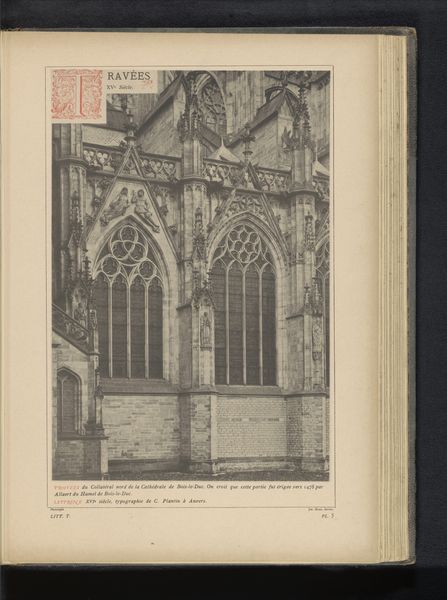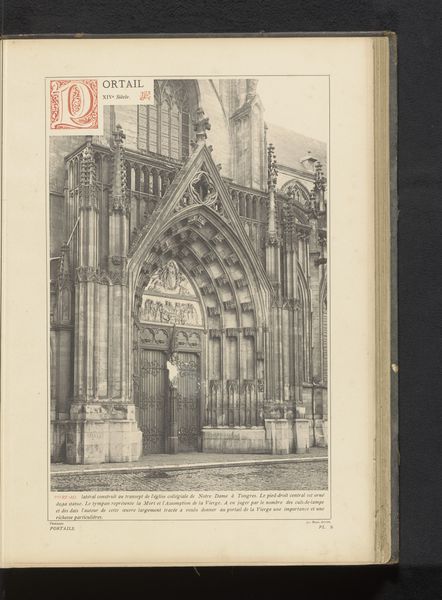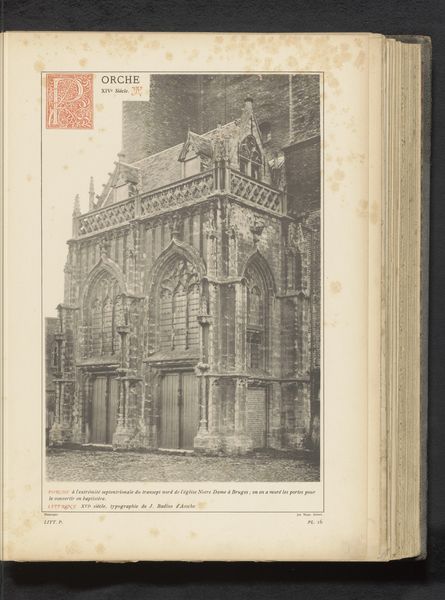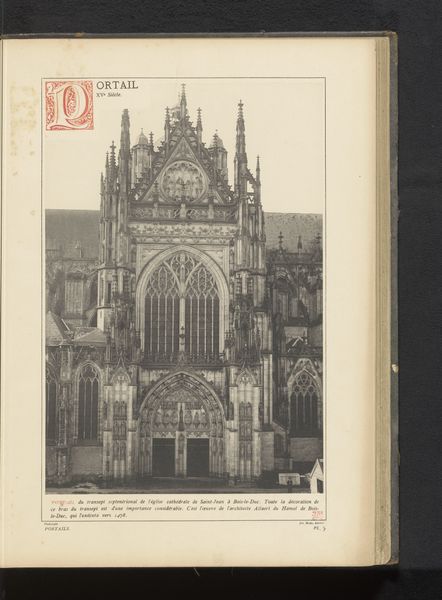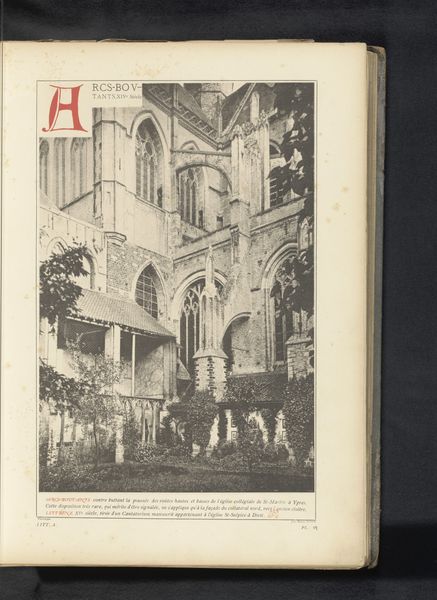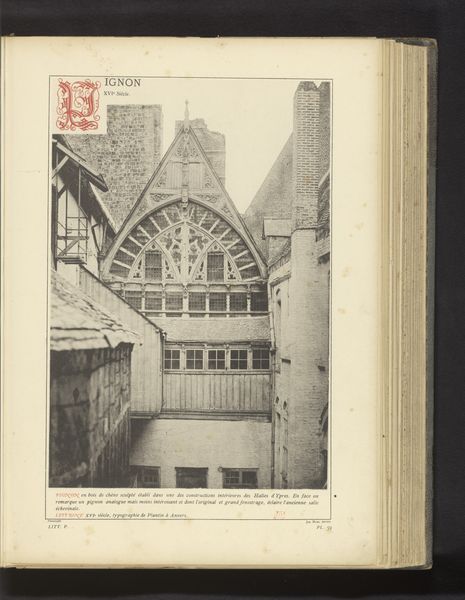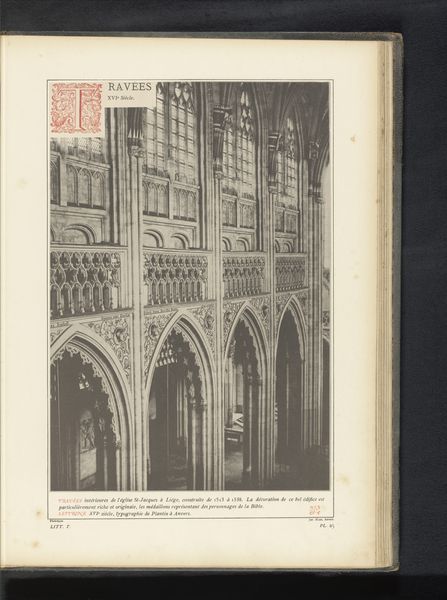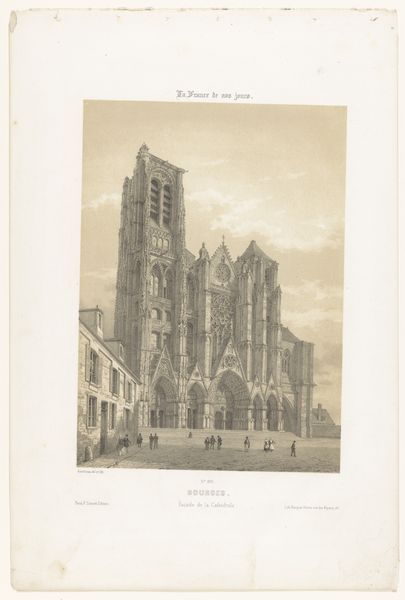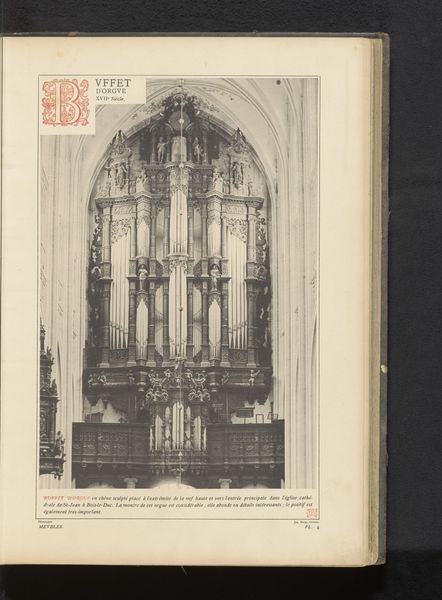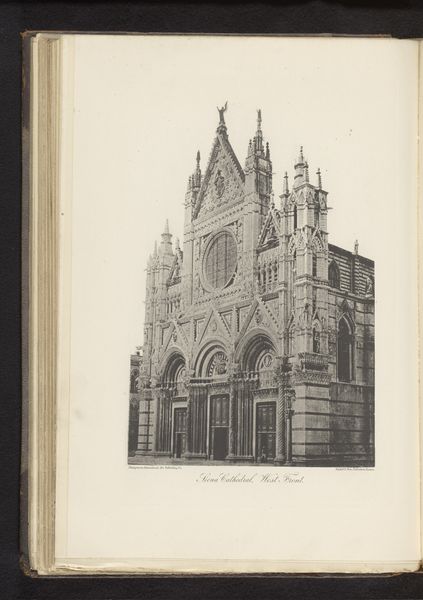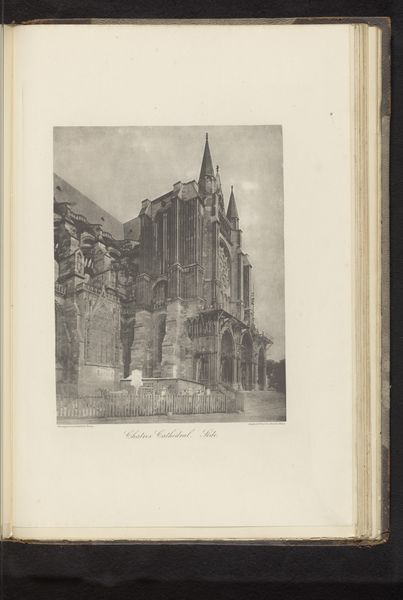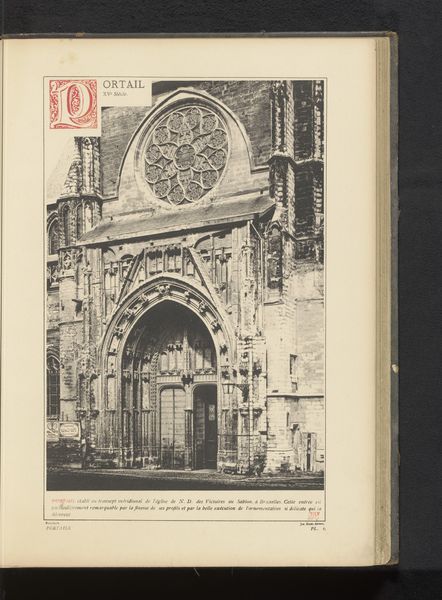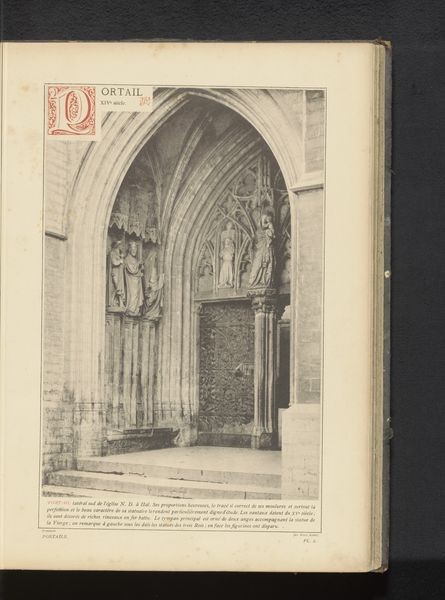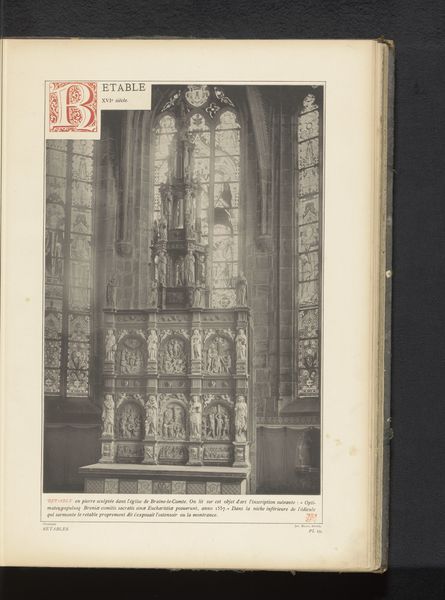
Dimensions: height 337 mm, width 233 mm
Copyright: Rijks Museum: Open Domain
Curator: This artwork is titled "Transept van de Grote Kerk te Goes" and dates back to before 1881. It appears to be a print, most likely an etching or a photograph, showcasing the architectural marvel of a grand church. Editor: It's imposing. The architecture just looms. And it looks strangely modern for something potentially dating so far back, maybe that’s the black and white photograph itself influencing that feeling. The gothic details contrast so starkly with the implied lives of the everyday people outside of those huge doors. Curator: Absolutely, the visual language evokes the monumentality of Gothic architecture and also places the church within a specific urban context. Churches historically served as powerful symbols of both spiritual and social control within communities. That dominating feeling likely wasn't an accident. Editor: Right, the photograph becomes evidence of that social structure. It makes me think about whose gaze this architecture was designed to impress, who held power and how religion legitimized these social hierarchies through impressive visual statements. Curator: And consider the medium; the use of photography or etching— reproducible technologies, implies a broader dissemination of these values and ideals, making it available not just to those within the immediate vicinity but potentially a much wider audience. Editor: Making religion mobile and accessible; now in print! You know, the interesting position of the viewer… Looking up at it almost cowering to it as if they should admire it, perhaps? The streets narrowing to make the church all the more awe-inspiring? Curator: Precisely. By controlling vantage points and the distribution of imagery, institutions reinforced their narratives, shaping public perception. Editor: This image isn’t just an image of a beautiful building; it’s a tool. What would this building mean to colonized folks, I wonder. What would they feel walking by such a domineering symbol. Curator: An important question, as these structures often represented colonial power. Editor: It really provokes such critical engagement with visual culture. Thanks for enlightening me on this etching's historical context. Curator: And thank you for prompting new questions about the photograph's potential role as a colonial and social apparatus!
Comments
No comments
Be the first to comment and join the conversation on the ultimate creative platform.
